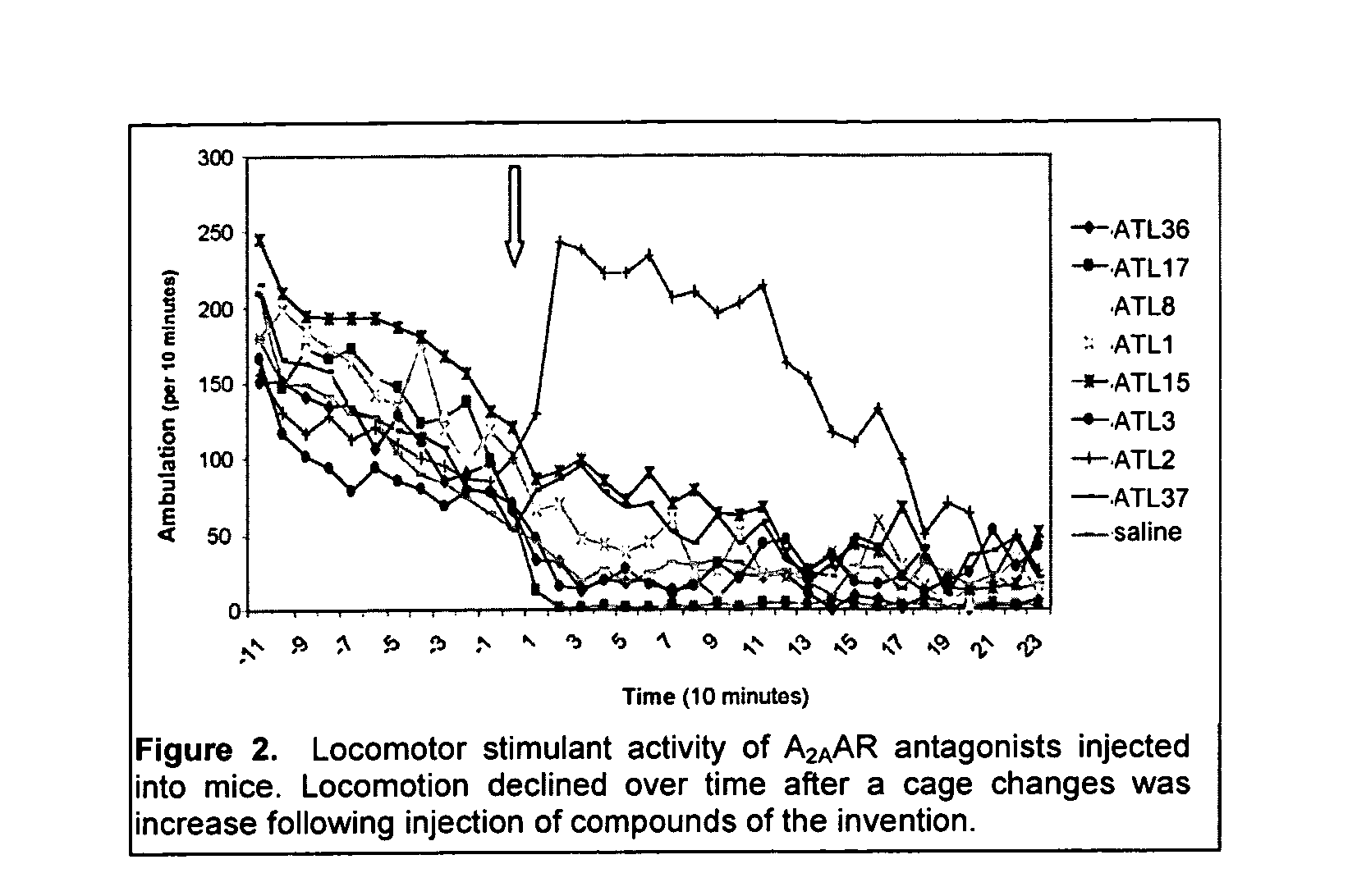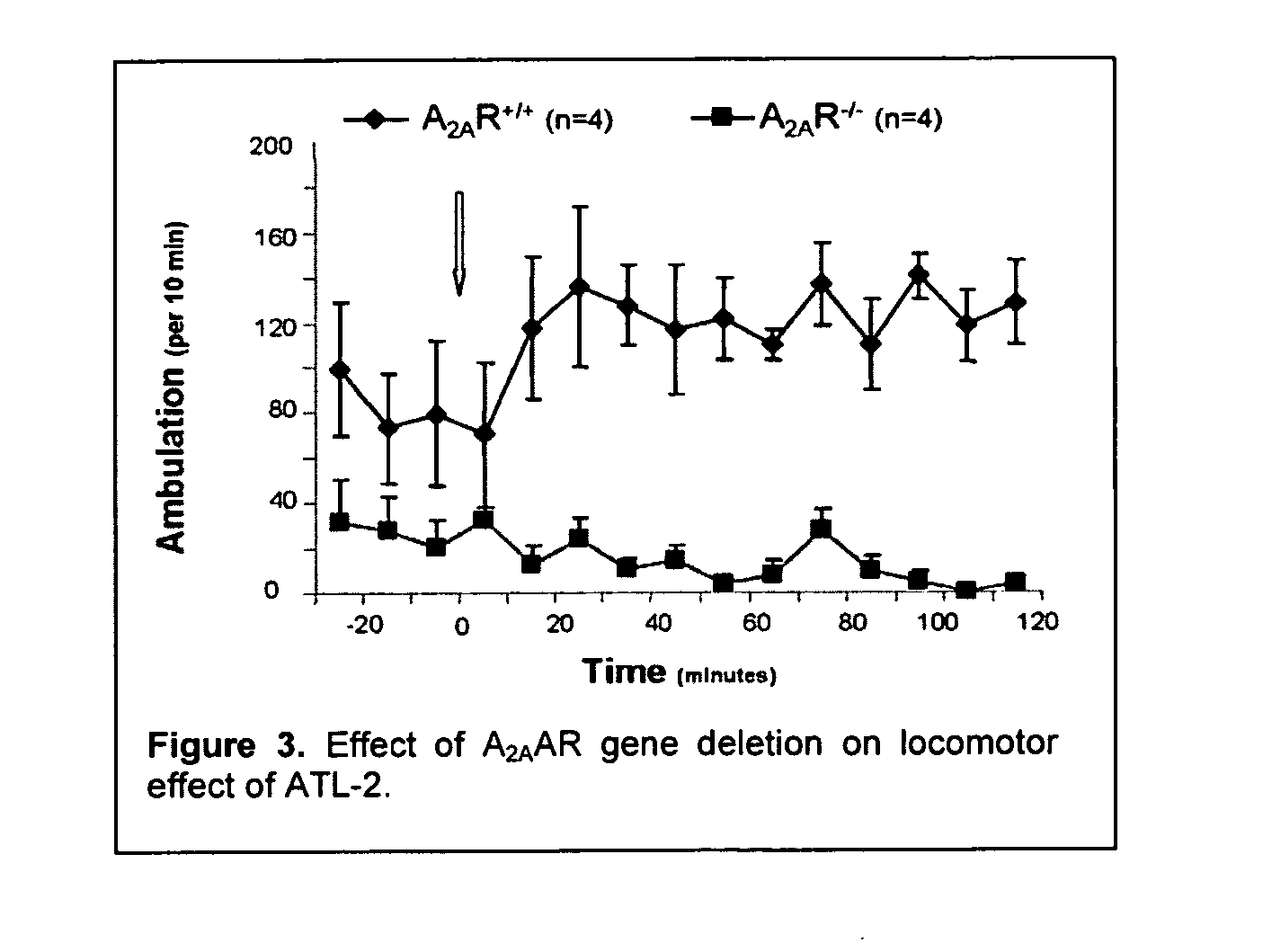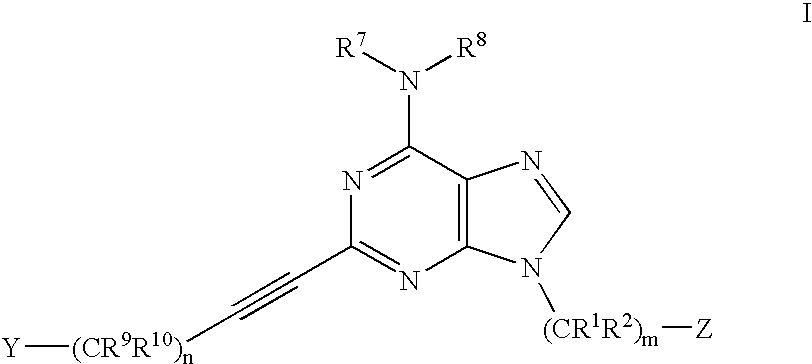Selective antagonists of A2A adenosine receptors
a technology of a2a adenosine receptor and selective antagonist, which is applied in the direction of drug composition, immunodegeneration, biocide, etc., can solve the problems of actual acceleration of dopaminergic neuron degeneration, l-dopa therapy, and the stoppage of trials with kw6002, so as to facilitate the preparation of composition and enhance or stabilize the composition. , the effect of stimulating motor activity
- Summary
- Abstract
- Description
- Claims
- Application Information
AI Technical Summary
Benefits of technology
Problems solved by technology
Method used
Image
Examples
Embodiment Construction
Definitions:
[0046] Unless specifically noted otherwise herein, the definition of the terms used are standard definitions used in the art of organic synthesis and pharmaceutical sciences.
[0047] Where a carbonyl group or a carbonyl derivative such as a thio carbonyl or an imine and the like, is represented by a group such as —C(═O)O— or —C(═O)NRa—, for example, it is intended that the corresponding isomeric group that is —OC(═O)— or —NRaC(═O)— is also included.
[0048] An “alkyl” group is a straight, branched, saturated or unsaturated, aliphatic group having a chain of carbon atoms, optionally with oxygen, nitrogen or sulfur atoms inserted between the carbon atoms in the chain or as indicated. A (C1-C20)alkyl, for example, includes alkyl groups that have a chain of between 1 and 20 carbon atoms, and include, for example, the groups methyl, ethyl, propyl, isopropyl, vinyl, allyl, 1-propenyl, isopropenyl, ethynyl, 1-propynyl, 2-propynyl, 1,3-butadienyl, penta-1,3-dienyl, penta-1,4-die...
PUM
| Property | Measurement | Unit |
|---|---|---|
| volume | aaaaa | aaaaa |
| weight | aaaaa | aaaaa |
| pH | aaaaa | aaaaa |
Abstract
Description
Claims
Application Information
 Login to View More
Login to View More - R&D
- Intellectual Property
- Life Sciences
- Materials
- Tech Scout
- Unparalleled Data Quality
- Higher Quality Content
- 60% Fewer Hallucinations
Browse by: Latest US Patents, China's latest patents, Technical Efficacy Thesaurus, Application Domain, Technology Topic, Popular Technical Reports.
© 2025 PatSnap. All rights reserved.Legal|Privacy policy|Modern Slavery Act Transparency Statement|Sitemap|About US| Contact US: help@patsnap.com



